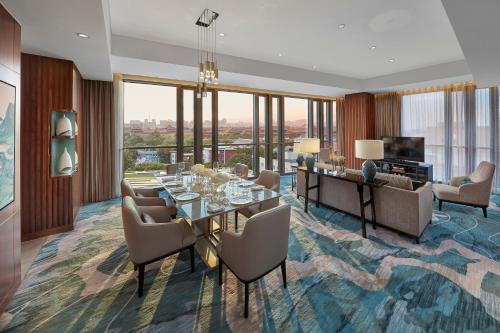Visiting Beijing’s hutongs, China
Tell me if this sounds like anywhere you know: a slum, gentrified as the hipsters move in; streets once avoided by decent folk now filled with trendy cafes and bars; and the last remaining residents of the old time resisting the inevitable and refusing to move.
Ring any bells?
Well, it should, because it’s the urban renewal that’s happening in cities all around the world. It happened in the inner suburbs of Sydney, in parts of Brooklyn in New York, and in the east of London. And now, as Chinese progress picks up pace, it’s happening in Beijing as well.
The gentrification is really obvious in the ‘hutongs’ around the Drum and Bell Towers in the north of the Inner City.
A hutong is a narrow street that has small single-storey houses coming off it. The houses are normally made up of four buildings facing into a central courtyard. The community is tight – not just physically but also socially – because the residents also run the local shops and restaurants in the street.
Over previous decades the hutongs have gradually been knocked down and replaced with denser housing. Even today there’s plenty of construction going on in the area, despite many of the streets being protected for heritage reasons.
In these protected streets, you can walk along and get lost in the alleyways as you watch Chinese life go on around you.
The tiny markets sell fruit on the street, a stove in a window will cook snacks, a trolley full of rubbish will almost knock you over as it hurtles past, old men will sit on the street playing cards, and a baby will piss in the street.
It feels like old Beijing when the streets are alive with action, red lanterns hanging from awnings, no English characters in sight and the guttural Mandarin shouted out of doorways. But, a warning – it’s now harder than ever to find these windows into yesteryear.
The gentrification of Beijing’s hutongs
As I started out by saying, the hipsters have moved in. The main street that the hutongs come off is now lined with trendy cafes, with guitar shops, with expensive clothing and shoe stores. I asked one local whether this was all done for the tourists and he told me it’s for the well-off young Beijingers who want to feel cool.
There’s a hair salon where the hairdressers, all dressed in black, blast music from a stereo and dance in the street; the coffee shops are clean, white and bright with decidedly Western interior design; I even saw waiters setting up a table of champagne inside one building that was clearly about to host a VIP function.
And all this just metres from the woman pulling a trailer of wood through an alley; the young boys collecting plastic bottles for the return money; the old men with bare bellies playing a boardgame on a crate while they smoke cigarettes.
Someone once told me how they were fearful for the future of the hutongs because of development – so many were being demolished to make room for new roads or apartment blocks.
It seems the fears were slightly misdirected because the buildings remain, it’s just the history that is being cleared away.
As the bars and restaurants get more crowded and the number of shops grow, the fear is that they’ll eventually over-run this living museum of life in Beijing.
THE BEST ACCOMMODATION IN BEIJING
Although it’s an enormous city, you’ll find most of the best places to stay in Beijing in the neighbourhoods to the east and northeast of the Forbidden City.
BACKPACKER

Although it’s more expensive than your average hostel, Peking Youth Hostel is definitely the best in the city, with a good location and helpful staff.
BUDGET

Although it’s great value, Sunworld Hotel Wangfujing feels quite upmarket, with lots of facilities and a good location.
BOUTIQUE

Enjoy the stunning views from the spacious rooms at the Mandarin Oriental Wangfujing, where there’s also a gorgeous indoor pool.
LUXURY

An absolutely gorgeous hotel, the Rosewood Beijing has impeccable service, an indoor pool, and excellent dining.